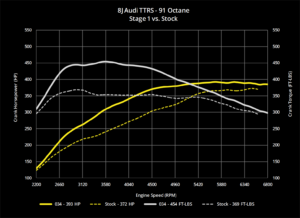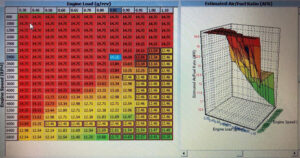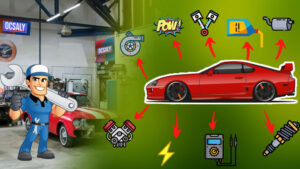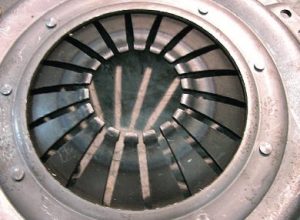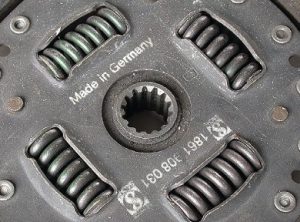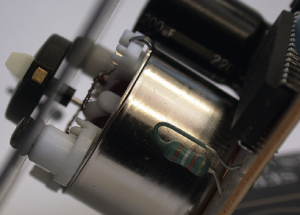Introduction: For car enthusiasts who want to push their car’s performance to the limit, stage 4 tuning is the ultimate upgrade. Stage 4 tuning involves making extensive modifications to your car’s engine, transmission, and chassis to achieve the highest level of performance possible. In this blog, we’ll dive deep into stage 4 tuning, what it entails, and the benefits and risks it provides. We’ll also discuss the precautions you need to take to ensure a safe and successful upgrade.
What is Stage 4 Tuning?
Stage 4 tuning is an extreme performance upgrade that involves making extensive modifications to your car’s engine, transmission, and chassis. The goal is to achieve the highest level of performance possible, which requires significant changes to the car’s components. The modifications typically include upgrading the turbocharger or supercharger, installing a high-flow fuel system, upgrading the engine internals, upgrading the transmission, installing a limited-slip differential, upgrading the suspension, and installing high-performance brakes.
How Does Stage 4 Tuning Work?
Stage 4 tuning involves making extensive modifications to your car’s engine, transmission, and chassis to achieve the highest level of performance possible. The modifications typically include:
- Upgraded turbocharger or supercharger: The turbocharger or supercharger is upgraded to increase the amount of air that flows into the engine, allowing it to produce more power.
- High-flow fuel system: A high-flow fuel system is installed to provide more fuel to the engine, allowing it to produce more power.
- Upgraded engine internals: The engine internals, such as the pistons, rods, and crankshaft, are upgraded to handle the increased power and stress.
- Upgraded transmission: The transmission is upgraded to handle the increased power and torque.
- Limited-slip differential: A limited-slip differential is installed to improve traction and handling.
- Upgraded suspension: The suspension is upgraded to improve handling and make the car more responsive.
- High-performance brakes: High-performance brakes are installed to improve stopping power and reduce brake fade.
Benefits of Stage 4 Tuning
Stage 4 tuning offers several benefits, including:
- Maximum horsepower and torque: You can expect a significant increase in horsepower and torque, which translates to blistering acceleration and high top speeds.
- Improved handling: The upgraded suspension and limited-slip differential improve handling and make the car more responsive.
- Enhanced braking performance: The high-performance brakes provide improved stopping power and reduce brake fade.
- Customizable: Stage 4 tuning is highly customizable, allowing you to tailor the modifications to your specific needs and preferences.
- Unmatched performance: Stage 4 tuning provides unmatched performance, making your car one of the fastest and most powerful on the road.
Risks of Stage 4 Tuning
While stage 4 tuning offers several benefits, there are also some risks involved, including:
- Engine damage: The increased stress on the engine can cause damage if not done correctly.
- Reduced engine reliability: The engine’s reliability may be reduced, as the modifications may put more strain on it.
- Voided warranty: Some car manufacturers may void the warranty if any modifications are made.
- Increased emissions: Depending on the upgrades, emissions may be increased, which can be a concern in some areas.
Precautions to Take
To ensure a safe and successful stage 4 tuning upgrade, you should take the following precautions:
- Choose a reputable tuner: Choose a reputable tuner with experience in stage 4 tuning and a proven track record of success.
- Use quality parts: Use high-quality parts from reputable manufacturers to ensure reliability and performance.
- Consider the driving environment: Consider the
You can start your Car Tuning Career here !
Are you tired of constantly being stuck in a dead-end job with no room for growth or advancement? If so, now is the time to take control of your future and invest in your career. With online car repair training, you can become a skilled auto mechanic in just a few short months and kickstart your journey to a successful and fulfilling career.
In today’s digital age, online learning has become more accessible and convenient than ever before. With online car repair training, you can study at your own pace and learn the latest techniques and technologies used in the automotive industry. From basic engine repair to advanced diagnostics, online courses offer a comprehensive curriculum that covers all aspects of automotive repair.
With the demand for skilled auto mechanics on the rise, now is the time to take advantage of the opportunities available in this lucrative field. Online car repair training offers flexible scheduling options, allowing you to balance your work and personal life while advancing your career.
So, why wait? Invest in your future today and sign up for online car repair training. You’ll be on your way to a fulfilling career in no time!
Take action now and enroll in an online car repair training course today. Start your journey towards a rewarding career in the automotive industry and start changing your life for the better.
*Get the Official Certificate after Completing the Course

You are probably taking this course for one of two reasons. Either you are preparing yourself to enter into the field of automotive service, or you are expanding your skills to include automotive electrical systems. In either case, congratulations on selecting one of the most fast-paced segments of the automotive industry. Working with the electrical systems can be challenging, yet very rewarding; however, it can also be very frustrating at times. For many people, learning electrical systems can be a struggle. It is my hope that I am able to present the course to you in such a manner that you will not only understand electrical systems, but will excel at it. There are many ways the theory of electricity can be explained, and many metaphors can be used. Some compare electricity to a water flow, while others explain it in a purely scientific fashion. Everyone learns differently. I am presenting electrical theory in a manner that I hope will be clear and concise. If you do not fully comprehend a concept, then it is important to discuss it with your instructor. Electricity is somewhat abstract; so if you do have questions, be sure to ask me in Udemy ask section.
Why Become an Electrical System Technician?
In the past, it was possible for technicians to work their entire careers and be able to almost completely avoid the vehicle’s electrical systems. They would specialize in engines, steering/ suspension, or brakes. Today, there is not a system on the vehicle that is immune to the role of electrical circuits. Engine controls, electronic suspension systems, and anti-lock brakes are common on today’s vehicles. Even electrical systems that were once thought of as being simple have evolved to computer controls. Headlights are now pulse-width modulated using high side drivers and will automatically brighten and dim based on the light intensity of oncoming traffic. Today’s vehicles are equipped with twenty or more computers, laser-guided cruise control, sonar park assist, infrared climate control, fiber optics, and radio frequency transponders and decoders. Simple systems have become more computers reliant. For example, the horn circuit on the 2008 Chrysler 300C involves three separate control modules to function. Even the tires have computers involved, with the addition of tire pressure monitoring systems!
Today’s technician must possess a full and complete electrical background to be able to succeed. The future will provide great opportunities for those technicians who have prepared themselves properly and learn more with this Car Mechanic Course.
On the off chance that you’re not especially precisely slanted, you might watch the people who are with appreciation, surprise, and irritation since they have something you don’t: a comprehension of how things work and how things fit together. Whenever they dismantle something, they can reassemble it how it was. Whenever they say that they need to investigate the hood, they can really get the darn thing open. Furthermore, when they need to change a level, they don’t endure ten minutes attempting to sort out which end of the raise is.
Fortunately, you don’t need to be brought into the world with a wrench in your grasp to know how to fix things — even things as apparently convoluted as a vehicle. I know; I’ve been there. The Introduction fills you in regarding my car revelation.
The Best Way to Learn Car Repair is start with this Auto Mechanic Course.
Obviously, the easiest errands can once in a while be the greatest obstacles to survive. All things considered, in the event that you couldn’t actually sort out some way to open the hood, how might you check the oil or the coolant level? That is the reason I start this course with the essentials: straightforward positions that you’ll have to do over and over — like opening the hood, lifting a vehicle, and replacing a tire. I likewise incorporate guidelines for filling the gas tank yourself (it’s less expensive than full-administration), a reliable technique for dismantling anything and assembling it back once more, and security pointers that each technician — experienced and amateur — ought to notice.


